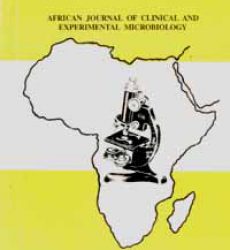Background/Aim: Outbreaks of human infections associated with consumption of fresh fruits and vegetables have occurred with increased frequency during the past decade. This study evaluated parasitic contamination of locally produced dry season vegetables cultivated in Enugu metropolis, Enugu State, Nigeria.
Materials/Method: Vegetables, water and soil samples selected from vegetable farms were investigated. A total of 160 vegetable samples, 15 soil samples and 15 water samples were investigated. The samples were washed separately in saline and the resulting solution was subjected to standard sedimentation and flotation techniques. Physiochemical analysis of soil and water samples was done using the standard DREM technique. Furthermore, the water samples were investigated for C. parvum using the modified Ziehl-Neelsen staining technique.
Results: Parasitic contamination of the different vegetables were Teifeairia occidentalis 242 (18.1%), Amaranthus hybridus 193 (15.1%), Cucurbita maxima 192 (15.0%), Solanum species 191 (14.9%), Ocimum grattisimum 136 (10.6%), Solanun nigrum 114 (8.9%), Gongronema latifolium 101 (7.9%), Talinum triangulare 73 (5.7%) and Murraya koenigii 39 (3.0%).The parasites identified included; Ascaris lumbricoides,Taenia spp, Fasciola hepatica, Schistosoma spp, Trichuris spp, Enterobius vermicularis, Toxocara.spp, Giardia lamblia, Entamoeba spp and Cryptosporidium parvum. Entamoeba species was the highest contaminating parasite 529 (41.3%) while Schistosoma haematobium was the least,14 (1.1%). Physiochemical analysis revealed a strong positive correlation between parasite load in water and total suspended solutes (TSS) (r = 0.59, p = 0.021) and turbidity ( r = 0.55, p = 0.032) and also a strong positive correlation between parasite load in the soil and organic matter (OM), (r = 0.71, p = 0.003) and silt (r = 0.63, p = 0.011).
Conclusion: These vegetables should be considered as potential sources of parasitic infections, especially when they are not properly cooked (the type called ‘Half Done’) or consumed raw like the local salad (abacha) because of the high risk of parasitic infections such as giardiasis, amoebiasis, enterobiasis, cyptosporidiosis, ascariasis, etc. Public enlightenment is necessary to enhance the adoption of effective food safety approaches by agronomic practices of vegetable farmers which will in turn reduce foodborne illnesses.
Keywords: Parasite, contamination, vegetables, Enugu
Download full journal in PDF below
Factors affecting the parasitic contamination of edible locally produced dry season leafy vegetables cultivated in south east Enugu, Nigeria

